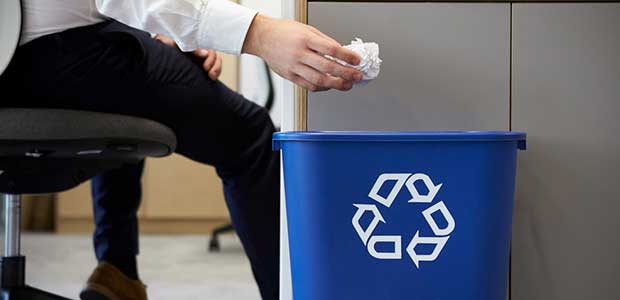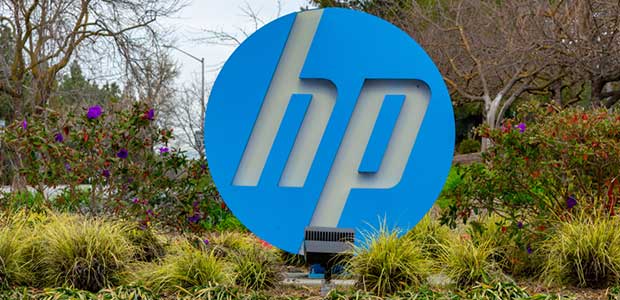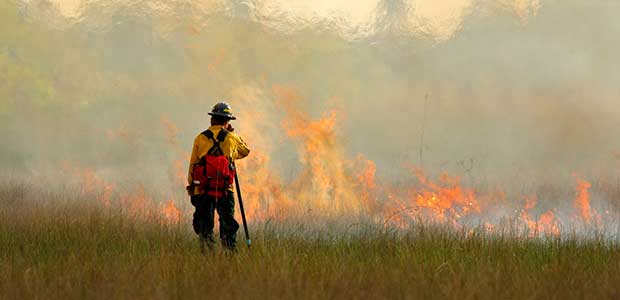
Many large companies like Apple, Amazon and Microsoft are rethinking their supply chains and carbon footprints after pressure from consumers and employees to address their role in climate change. Here’s what these groups are doing, and experts’ take on their effectiveness.

While news headlines regarding pandemic have all but flooded the media for months, many are noticing the increasingly obvious connections between the virus and the climate crisis. Climate policymaker Rhiana Gunn-Wright helps point out the connections between two of the biggest crises of our day.

The National Resource Defense Council (NRDC) just released a report that argues how climate disruption is a growing danger to the health of indoor and outdoor workers. Read what the NRDC and researchers have to say.

As the pandemic continues, the need for environmentalism shows the overlap between health, sustainability and business. It is up to businesses to adapt, and improve.

The increase in excessive use of disinfectants could be detrimental to the environment and the treatment of the virus. Here's how you can use disinfectants safely and smartly for the environment.

The seafood industry relies on one of the world's biggest and most important ecosystems: the ocean. Here are ways the fishing industry is being pressed to operate more sustainably.

Energy consultants can help you make sustainable, eco-friendly decisions for your company. Here's what you should consider when hiring an energy consultant for your business.

Arctic fires are not necessarily uncommon, but recent fires up north last month are unlike previous blazes; intense arctic wildfires in June not only released record amounts of pollutants into the air, but it also pushed global temperatures dangerously higher.

COVID-19 has disrupted companies of all types worldwide. Despite hard times, however, there are steps you can take to stabilize your operation.

A new bill in the House of Representatives may change how people use plastics. If implemented, it could mean some changes for you and your company.

The company’s annual report is a thorough and encompassing analysis of its progress and goals for environmental and social change around the world. With new announcements, familiar commitments and impressive goals, HP’s 2019 Sustainable Impact report is surely a business model you want to check out.

Every year, June 22 is recognized as World Rainforest Day: a day committed to raising awareness about our world’s largest source of oxygen—and one of the Earth’s most important types of ecosystems. This year, 45 major businesses decided to recognize it together by reevaluating their supply chains.

If you want to help your business be greener and more eco-friendly, you’re not alone. Here are some manageable steps you can take to reach your goals for environmental responsibility—and cut costs in the process.

This year started with a burning Australia and then a worldwide pandemic. As Australia recovers from its scorched landscape with new fire response technology, the U.S. enters into a hot summer season of high fire risk—with little wildfire funding after COVID-19.

The shutdown of major league sports teams and seasons during the COVID-19 pandemic has left sports fans across the U.S. sad. However, a recent study on the National Hockey League (NHL) shows the pandemic’s impact on sports, the environment and the leaders of the industry overall.

Everyone needs water--but water consumption is not always proportionately distributed. Here's a deep dive into how larger companies use water, and how they can consume better.

The pandemic has meant less car pollution, but not much of a decrease in overall pollution. Why? Because car pollution is just one player.

Businesses have a responsibility to consider to environment--for the sake of the earth and consumers. That responsibility does not disappear during a pandemic, as climate change, resource scarcity, and many other challenges do not shelter in place along with us.

Water efficiency is just as much about improved technologies as it is changing consumers' behavior. One study shows how a little consumer nudge goes a long way--even on a city-wide scale.

For many policymakers, efforts to reopen the economy overlap with the need for green initiatives. As various regions prepare for the bumpy road ahead, the focus on green living and environmental protection has never been more crucial.